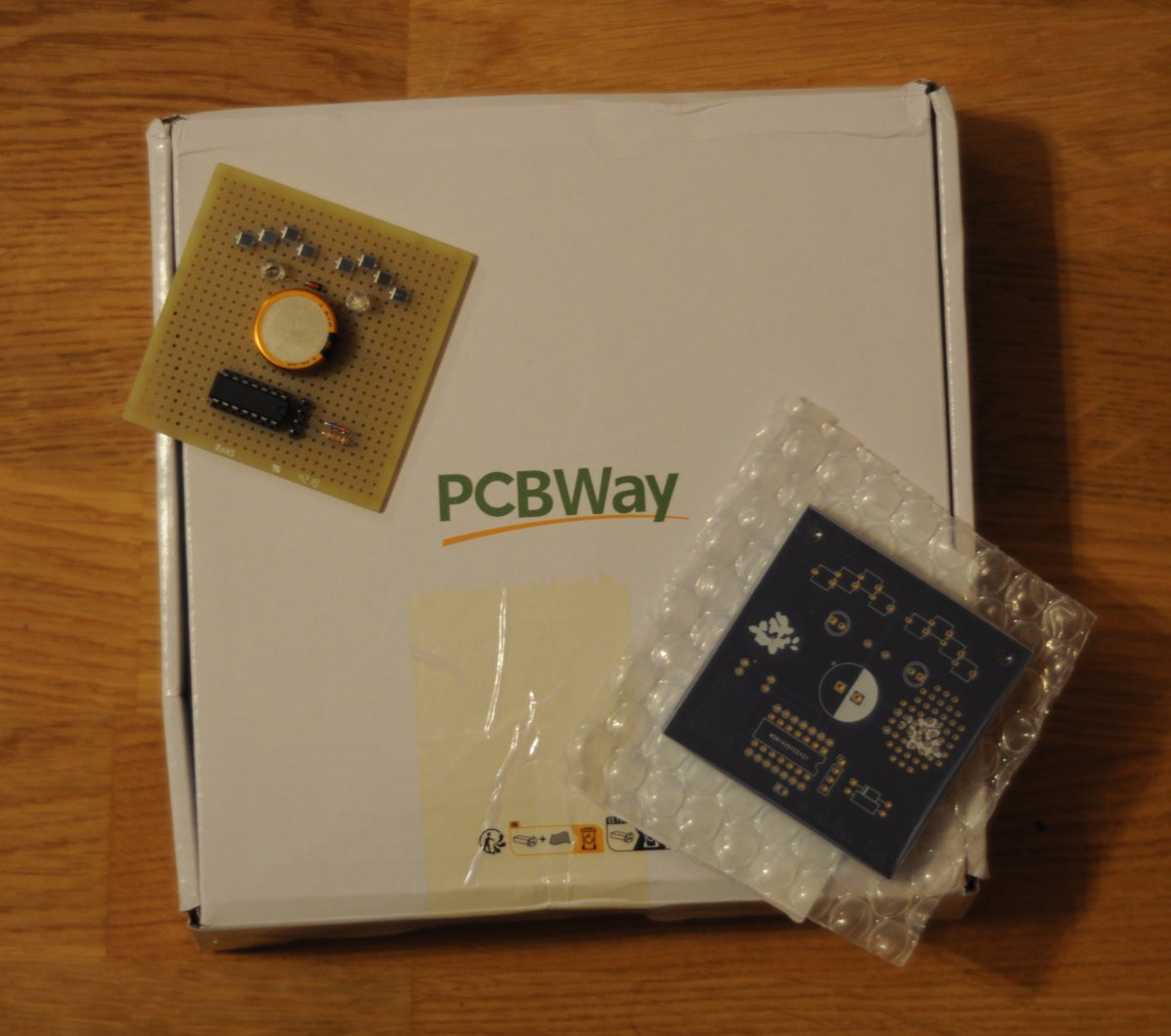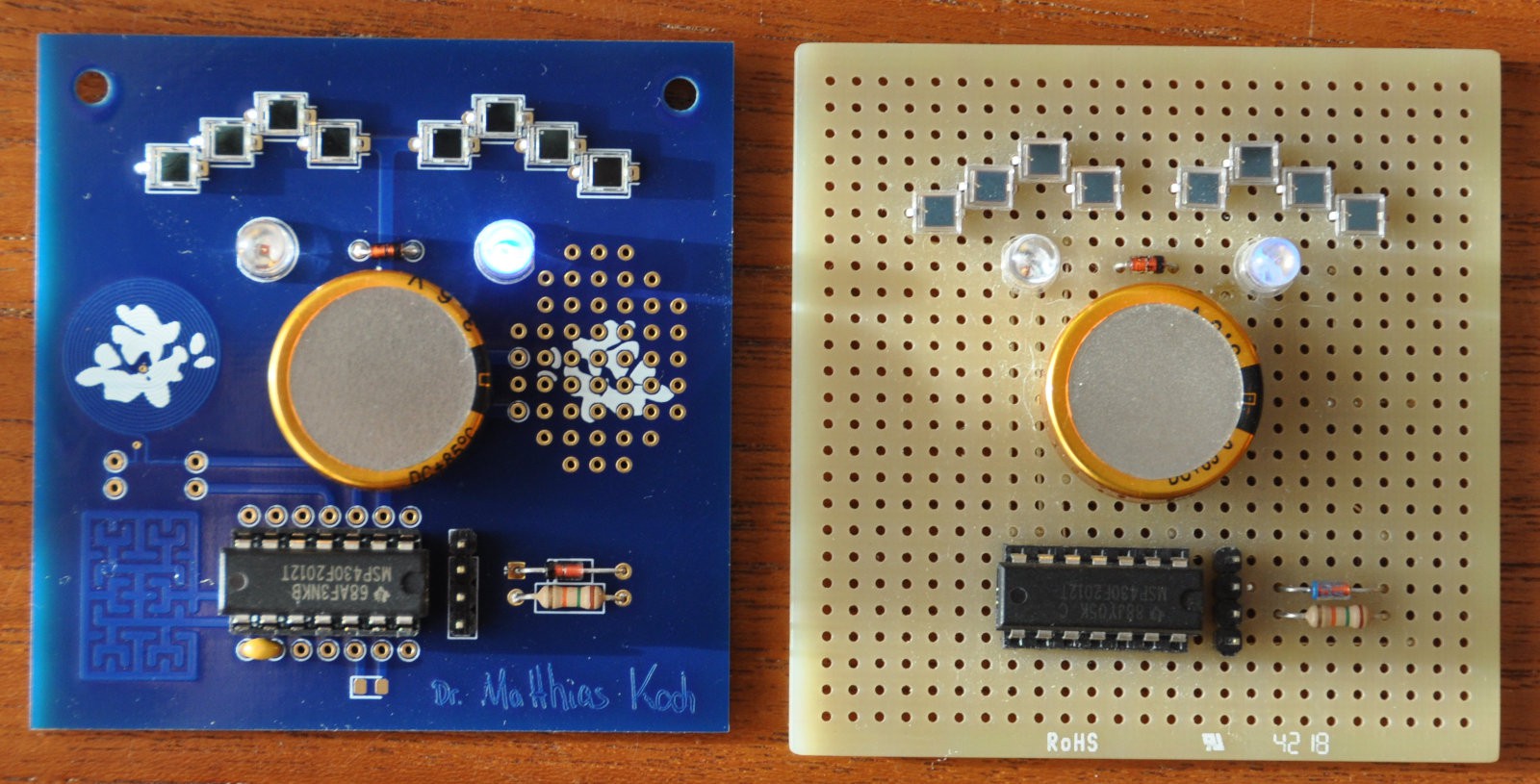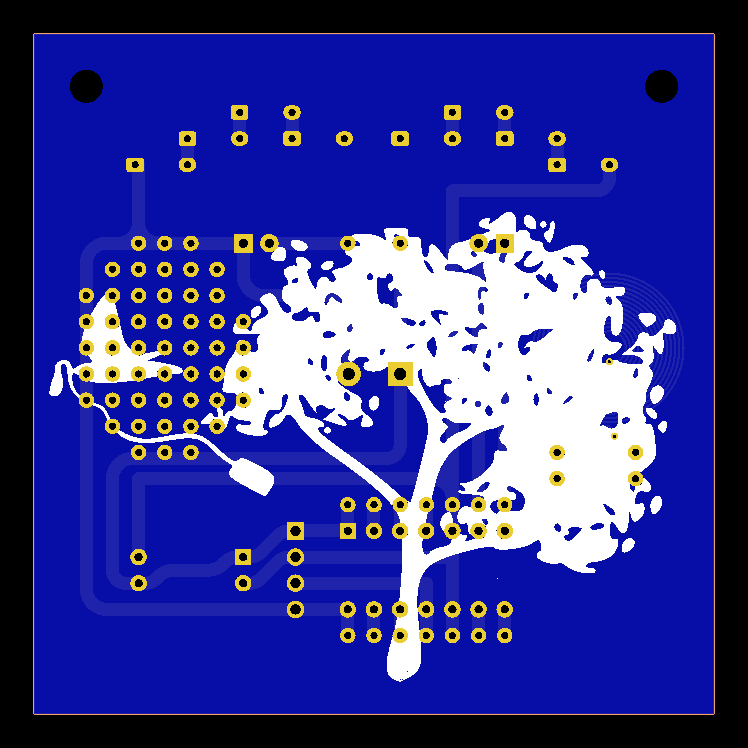
For a long time, I wanted to dive into PCB design - and after releasing this project, Liam from PCBWay contacted me and kindly offered my first PCB production run for free! Many thanks!

I immediately started learning Kicad, and as I admired the beautiful creations of the badge scene for a long time - being FPGA firmware developer in the MCH2022 badge team myself - I decided that I'll use the known good schematic, but try my very best in terms of artwork.

I decided to go with blue solder mask, white silkscreen, ENIG gold finish, and of course I included artwork from XKCD: "Garden", https://xkcd.com/1663/ slightly modified and vectorised with Inkscape.
Kicad allows direct SVG import into any layer - and the online Gerber viewer of PCBWay helped to get everything looking nice on the first try:




As the new PCBs have the same schematic as the original, flashing the unmodified hex file was enough for the solar blinky to start working.
While doing my first design, I also included a small Hilbert fractal as capacitive touch button in a charge pump configuration, and a PCB coil in order to hopefully allow wireless charging in darkness using a LC resonant circuit.
By clipping on 4.7 nF and the oscilloscope and wrapping the PCB with two turns of wire to the function generator, I measured a resonance maximum at 957 kHz, with the frequency shifting to 310 kHz using a 470 nF capacitor, giving an inductance of 5.6 - 5.8 uH.
Looking forward to more experiments!
 Matthias Koch
Matthias Koch
Discussions
Become a Hackaday.io Member
Create an account to leave a comment. Already have an account? Log In.